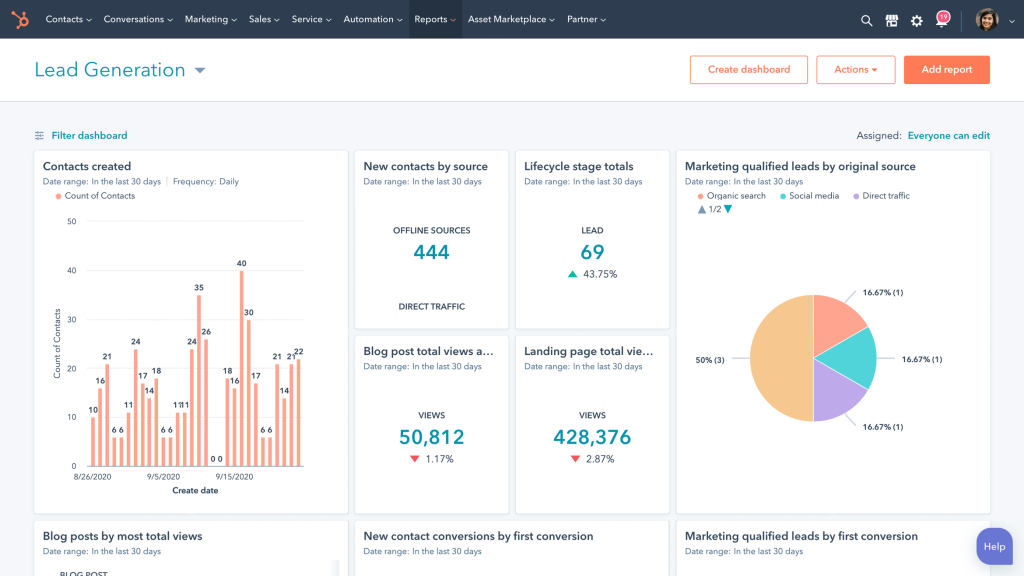how to do marketing through social media
In today’s digital age, harnessing the power of social media is paramount for any successful marketing strategy. Social media platforms have become indispensable tools for businesses to connect with their audience, build brand awareness, and drive sales. In this comprehensive guide, we will explore effective techniques to navigate the dynamic world of social media marketing through Social media.
- Understanding Your Audience:
Before diving into social media marketing, it’s crucial to identify and understand your target audience. Conduct thorough research to determine the platforms your audience frequents and tailor your strategy accordingly. By knowing your audience, you can create content that resonates and engages, fostering a more meaningful connection.
- Choosing the Right Platforms:
Not all social media platforms are created equal. Each platform caters to a specific demographic and content style. For instance, Instagram is ideal for visual content, while Twitter is great for concise updates. Tailor your approach to the platform that aligns with your business and audience.
- Creating Compelling Content:
The backbone of any successful social media campaign is compelling content. Develop a content calendar that includes a mix of visuals, videos, and written posts. Utilize eye-catching visuals and craft compelling captions to capture your audience’s attention. Consistency is key, so maintain a regular posting schedule.
- Engaging with Your Audience:
Social media is a two-way street. Engage with your audience by responding to comments, messages, and mentions promptly. Conduct polls, ask questions, and encourage user-generated content to foster a sense of community. The more engagement you generate, the more visible your brand becomes.
- Utilizing Paid Advertising:
While organic reach is essential, paid advertising can significantly amplify your social media presence. Platforms like Facebook and Instagram offer targeted advertising options, allowing you to reach specific demographics. Invest in paid campaigns strategically to maximize your ROI.
- Monitoring Analytics:
To refine your social media strategy, regularly monitor analytics. Pay attention to metrics such as engagement, reach, and conversion rates. Use this data to identify what works and what needs improvement. Platforms often provide insights that can guide your content strategy for optimal results.

- Staying Updated on Trends:
Social media is ever-evolving, with new features and trends emerging regularly. Stay informed about the latest trends and updates on each platform. Experiment with new features and formats to keep your content fresh and align with current user preferences.
In conclusion, mastering social media marketing requires a combination of understanding your audience, creating compelling content, engaging with your community, utilizing paid advertising, monitoring analytics, and staying updated on trends. By implementing these strategies, you can establish a robust social media presence that enhances your brand’s visibility and drives meaningful connections with your audience.
1. Understanding Your Audience:
- Conduct Surveys and Polls: Use tools like Instagram Polls, Twitter Polls, or Facebook Surveys to directly gather insights from your audience. Ask questions about their preferences, challenges, and interests.
- Social Listening: Monitor social media conversations related to your industry or niche. Tools like Hootsuite, Mention, or Brandwatch can help you track mentions and trends, providing valuable insights.
2. Choosing the Right Platforms:
- Know Your Platform’s Algorithm: Each platform has its own algorithm for content visibility. Stay informed about changes and adapt your strategy accordingly. For example, Instagram prioritizes content with higher engagement.
- Diversify Content Across Platforms: While certain platforms may be your primary focus, don’t neglect others entirely. Repurpose content to fit different platforms and reach a broader audience.
3. Creating Compelling Content:
- Tell Stories: Humans connect with stories. Share your brand’s journey, customer success stories, or behind-the-scenes glimpses. Use storytelling techniques to make your content more relatable.
- Incorporate User-Generated Content (UGC): Encourage your audience to create content related to your brand. UGC builds trust and authenticity, as potential customers see real people engaging with your products or services.
4. Engaging with Your Audience:
- Host Q&A Sessions: Conduct regular Q&A sessions on platforms like Instagram Live or Facebook Live. This allows direct interaction with your audience, addressing their queries and building a sense of community.
- Contests and Giveaways: Organize contests or giveaways to boost engagement and attract new followers. Ensure that participants share your content or tag friends, increasing your brand’s visibility.
5. Utilizing Paid Advertising:
- Target Specific Demographics: Take advantage of detailed targeting options provided by advertising platforms. Define your audience based on demographics, interests, and behavior to ensure your ads reach the right people.
- A/B Testing: Experiment with different ad creatives, copy, and targeting options. A/B testing helps identify the most effective elements of your campaigns and optimize for better results.

6. Monitoring Analytics:
- Set Key Performance Indicators (KPIs): Clearly define your social media goals and choose KPIs that align with these objectives. Whether it’s brand awareness, engagement, or conversion, tracking the right metrics is essential.
- Regularly Evaluate and Adjust: Social media is dynamic. Regularly assess your analytics, identify patterns, and be ready to adjust your strategy. What works today might need tweaking tomorrow.
7. Staying Updated on Trends:
- Follow Industry Leaders: Keep an eye on influencers, thought leaders, and competitors in your industry. What trends are they adopting? How are they engaging with their audience? Learn from their successes and failures.
- Experiment with New Features: Social media platforms regularly introduce new features. Be an early adopter and experiment with these features to stay ahead of the curve and capture your audience’s attention.
Incorporating these additional strategies into your social media marketing plan will enhance your overall approach and help you stay competitive in the ever-evolving digital landscape.
8. Optimizing Content for Each Platform:
- Tailor Content Length: Different platforms have different character limits and audience expectations. Craft your messages and captions accordingly. For instance, Twitter demands brevity, while LinkedIn allows for more in-depth content.
- Use Platform-Specific Features: Leverage unique features offered by each platform. Instagram Stories, IGTV, LinkedIn Articles, and Facebook Events provide diverse ways to engage your audience.
9. Build Relationships with Influencers:
- Identify Relevant Influencers: Collaborate with influencers in your industry or niche. Influencers can extend your reach to their followers, providing credibility and exposure. Ensure that influencers align with your brand values.
- Authentic Partnerships: Foster authentic relationships with influencers. Authenticity is key in influencer marketing. Encourage influencers to share their genuine experiences with your brand.
10. Mobile Optimization:
- Responsive Design: Given the prevalence of mobile users, ensure that your website and landing pages are mobile-friendly. This is not only crucial for user experience but also impacts social media ad performance.
- Mobile-Friendly Content: Create content that looks appealing on mobile devices. Test images, videos, and captions to ensure they display well on smaller screens.
11. Community Building:
- Create Facebook Groups: Establishing a Facebook group centered around your brand or industry allows for deeper interactions. It fosters a sense of community and provides a space for discussions among your audience.
- Host Virtual Events: Organize webinars, live Q&A sessions, or virtual workshops. These events not only engage your audience in real-time but also provide valuable content that can be repurposed.
12. SEO Integration:
- Optimize Profiles: Ensure that your social media profiles are complete and optimized for search engines. Use relevant keywords in your bio and about sections to enhance discoverability.
- Backlinks: Share content from your website on social media to drive traffic. This can positively impact your website’s SEO, as social signals are considered by search engines.
13. Consistent Branding:
- Unified Brand Image: Maintain a consistent brand image across all social media platforms. Use the same logo, brand colors, and messaging. Consistency builds recognition and trust.
- Create a Style Guide: Develop a social media style guide that outlines the tone, style, and visual elements to be used in your content. This ensures a cohesive brand identity.
14. Crisis Management:
- Prepare a Crisis Plan: Have a plan in place for handling negative comments, controversies, or crises. Respond promptly, professionally, and transparently to maintain your brand’s reputation.
- Monitor Social Mentions: Use social media listening tools to monitor mentions of your brand. Address concerns proactively and show that you are attentive to your audience’s feedback.
15. Encourage Cross-Platform Engagement:
- Cross-Promote Content: Share snippets or teasers of content from one platform on others. Encourage your audience to follow you on multiple platforms for a well-rounded brand experience.
- Run Cross-Platform Contests: Host contests that involve participation across multiple platforms. This not only increases engagement but also expands your reach.
Implementing these advanced strategies alongside the foundational ones will contribute to a robust and effective social media marketing strategy. Stay adaptable, monitor results, and be ready to refine your approach based on the evolving landscape and audience preferences.
16. Interactive Content:
- Polls and Surveys: Use interactive features like polls on Instagram and Twitter or surveys on Facebook to engage your audience. This not only boosts interaction but also provides valuable insights.
- Quizzes and Challenges: Create quizzes or challenges related to your industry. Encourage users to participate and share their results, increasing the virality of your content.
17. Micro-Influencers:
- Target Niche Audiences: Consider working with micro-influencers who have a smaller but highly engaged and targeted audience. They often offer a more personal connection with their followers.
- Authentic Reviews: Micro-influencers can provide authentic reviews and testimonials, which may be more relatable to their audience compared to larger influencers.
18. Chatbots and Messenger Marketing:
- Implement Chatbots: Use chatbots on messaging platforms like Facebook Messenger to automate responses to common queries. This enhances customer service and engagement.
- Drip Campaigns: Set up drip campaigns within messaging apps to nurture leads. Provide valuable content and gradually guide users toward your products or services.
19. UGC Campaigns:
- Themed Hashtag Campaigns: Launch user-generated content campaigns around specific themes. Create a branded hashtag and encourage your audience to share content related to that theme.
- Feature User Content: Showcase user-generated content on your official social media accounts. This not only appreciates your community but also encourages others to contribute.
20. Augmented Reality (AR) and Virtual Reality (VR):
- AR Filters and Lenses: Create custom AR filters on platforms like Instagram and Snapchat. This not only engages your audience but also associates your brand with innovative and interactive experiences.
- Virtual Events: Host virtual events or product launches using VR technology. This can set your brand apart and create a memorable experience for your audience.
21. Employee Advocacy:
- Empower Your Team: Encourage employees to share company content on their personal profiles. This extends your reach and adds a human touch to your brand.
- Employee Takeovers: Allow employees to take over your social media accounts for a day. This offers a behind-the-scenes look at your company and helps build a more personal connection with your audience.
22. Localized Targeting:
- Geo-Targeted Ads: Use geo-targeting in your social media advertising to reach audiences in specific locations. This is especially beneficial for businesses with physical locations.
- Localized Content: Tailor your content to local audiences. Highlight community events, partnerships, or initiatives to resonate with the local community.
23. Data-driven Decision Making:
- Analytics Integration: Integrate social media analytics with other business analytics tools. This provides a holistic view of your marketing efforts and helps in making data-driven decisions.
- Attribution Modeling: Understand the customer journey and attribute conversions to specific social media touchpoints. This insight helps allocate resources effectively based on the channels that contribute most to conversions.
24. Social Commerce:
- Shoppable Posts: Platforms like Instagram and Facebook offer shoppable posts. Tag your products in posts, allowing users to purchase directly through the platform.
- Direct Sales via Messaging Apps: Explore selling products directly through messaging apps. Some platforms enable transactions within the chat, streamlining the purchasing process.
25. Inclusive and Diverse Content:
- Representation Matters: Ensure your content reflects diversity and inclusivity. Showcase a variety of voices, perspectives, and experiences to connect with a broader audience.
- Authenticity in Representation: Authenticity is key; avoid tokenism. Represent diversity genuinely by integrating it into your brand’s values and storytelling.
Integrating these advanced strategies into your social media marketing plan will not only help you stay ahead of the curve but also deepen your connection with your audience. Remember to adapt these strategies based on your specific industry, target audience, and overall marketing objectives. Regularly analyze performance metrics to refine and optimize your approach over time.






